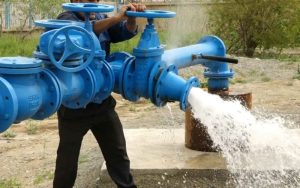The estimated average daily water usage in Iran is 157 liters per day for each person. This includes all activities such as drinking, cooking, bathing, washing clothes, dishwashing, hygiene, cleaning houses, and miscellaneous tasks. The individual consumption for each activity is 5, 10, 50, 20, 15, 30, 10, and 17 liters respectively. In megacities like Tehran, water consumption may increase to 250 liters during warm seasons.
The average daily domestic water consumption per person globally is estimated to be between 135 to 140 liters. However, in European countries where the rate of precipitation is high this number drops to 130 liters per day per person. On the other hand in regions where water accessibility is limited such as most parts of Iran groundwater is a crucial and sole source of water supply through boreholes.
For instance, in Tehran surface water resources supply 52% of the drinking water while the remaining 48% comes from water extracted from aquifers through 2240 boreholes. While cities have multiple resources for water supply many villages solely rely on groundwater.
The Groundwater Crisis and the Need for Sustainable Solutions
Over-extraction of groundwater in Iran has led to a significant decline in water tables, land subsidence, and the degradation of aquifer quality. Numerous regions have been officially classified as “overdrawn” or “critically restricted” zones, where any further drilling is either prohibited or severely limited. In these contexts, the rehabilitation of existing wells becomes not only necessary but urgent.
One of the promising technological interventions in this field is the Nitro Pulse method—a technique designed to restore the functionality of wells. This method involves high-pressure mechanical pulses to dislodge mineral deposits, biofilms, and other obstructions that reduce water flow in aging or clogged boreholes. Unlike traditional cleaning techniques, Nitro Pulse is non-invasive, cost-effective, and environmentally friendly, making it a viable solution for areas with limited resources and strict environmental regulations.

